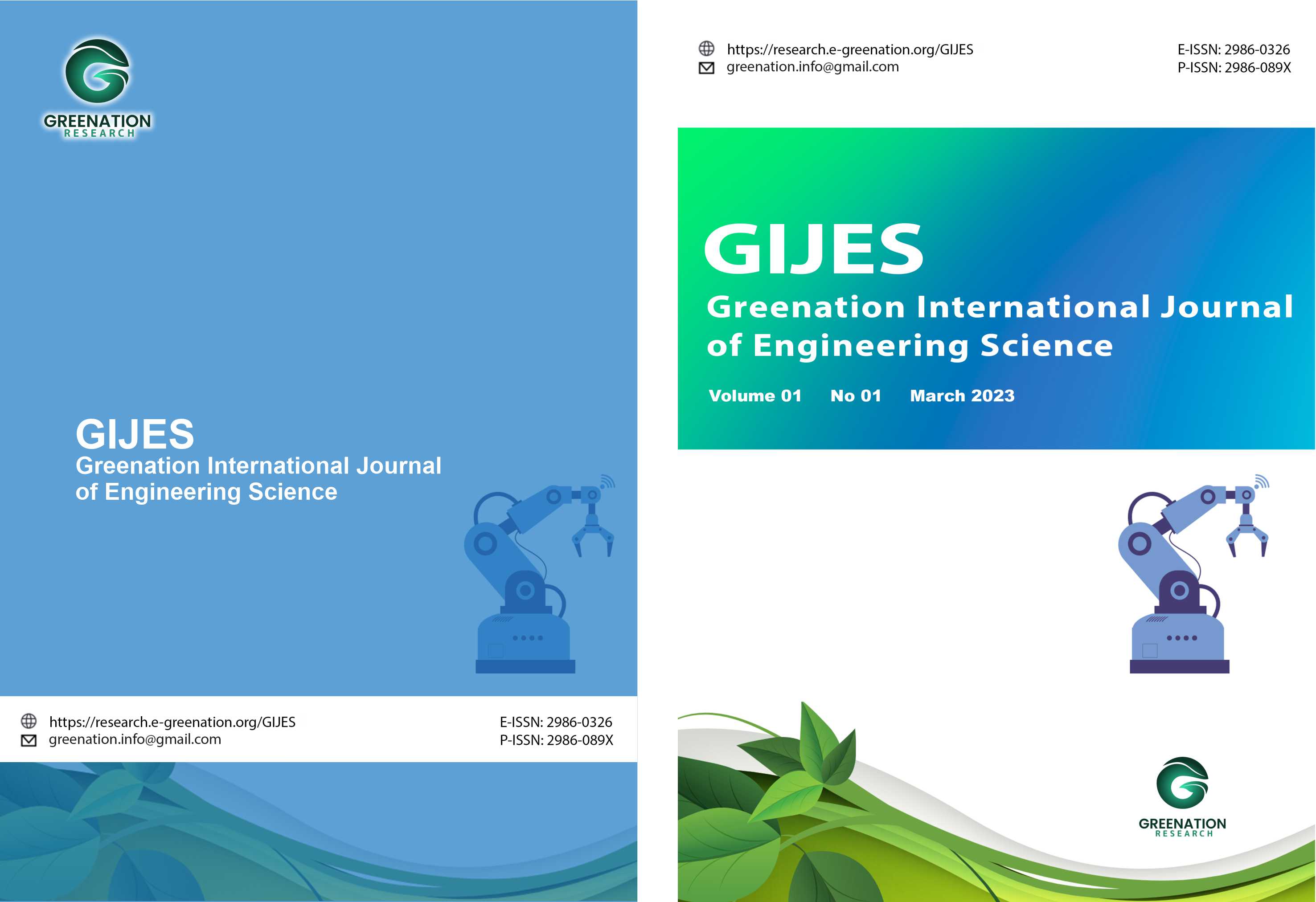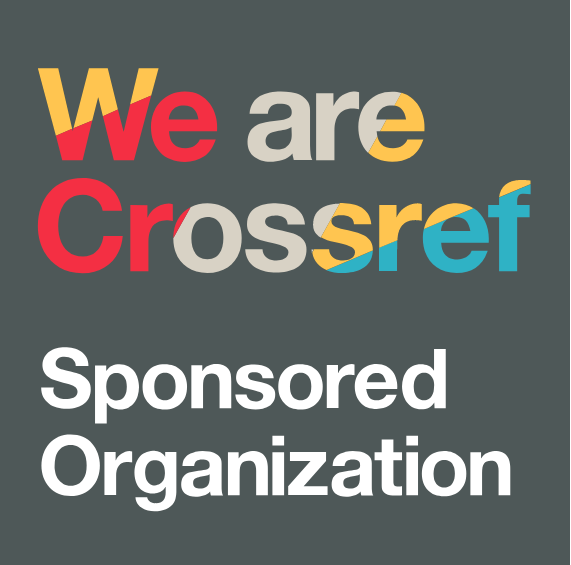Perceptions of Electric Vehicle Adoption among Young Adults in Ahmedabad: Exploring Influences and Implications
DOI:
https://doi.org/10.38035/gijes.v1i4.307Keywords:
electric vehicle adoption, young adults, consumer behaviorAbstract
This study explores the perceptions of young adults aged 18-30 in Ahmedabad, India, toward electric vehicle (EV) adoption. A quantitative approach was employed, gathering data from 104 respondents via a structured questionnaire. Key factors examined include vehicle preference, peer influence, and promotion of EVs. One-way ANOVA results indicated that age did not significantly impact these factors, suggesting that other variables, such as environmental concerns and technological advancements, may have a stronger influence on purchase intentions. The study highlights the growing awareness of sustainability and technology among youth, with implications for targeted marketing strategies. The research provides a foundation for future studies on EV adoption across different regions and age groups. Additionally, the findings contribute to the global conversation on reducing carbon emissions and increasing EV adoption for a sustainable future.
References
Akkerman, F., Lalla-Ruiz, E., Mes, M., & Spitters, T. (2022). Cross-Docking: Current Research Versus Industry Practice and Industry 4.0 Adoption. In T. Bondarouk & M. R. Olivas-Luján (Eds.), Smart Industry – Better Management (Vol. 28, pp. 69–104). Emerald Publishing Limited. https://doi.org/10.1108/S1877-636120220000028007
Arvidsson, N., Weir IV, H. T., & Orving, T. (2024). Operational performance of light electric freight vehicles in the last mile: two Nordic case studies. International Journal of Physical Distribution & Logistics Management, 54(2), 192–210. https://doi.org/10.1108/IJPDLM-02-2023-0079
Björklund, M., Forslund, H., & Ülgen, V. S. (2024). The paradoxical nature of greening transportation: an analysis of tensions in buyer–supplier dyads. International Journal of Physical Distribution & Logistics Management, ahead-of-print(ahead-of-print). https://doi.org/10.1108/IJPDLM-11-2023-0406
Caniëls, M. C. J., & Curseu, P. (2024). Contagious resilience – how leaders’ resilient behaviour promotes followers’ resilient behaviour. Leadership & Organization Development Journal, 45(5), 754–775. https://doi.org/10.1108/LODJ-09-2023-0474
Chiappini, H., Marinelli, N., Jalal, R. N.-U.-D., & Birindelli, G. (2023). Past, present and future of impact investing and closely related financial vehicles: a literature review. Sustainability Accounting, Management and Policy Journal, 14(7), 232–257. https://doi.org/10.1108/SAMPJ-09-2022-0471
Chizaryfard, A., Lapko, Y., & Trucco, P. (2023). Strategic closed-loop supply chain configuration in the transition towards the circular economy of EV batteries: an evolutionary analytical framework. The International Journal of Logistics Management, 34(7), 142–176. https://doi.org/10.1108/IJLM-06-2021-0337
Ciasullo, M. V., Polese, F., Montera, R., & Carrubbo, L. (2021). A digital servitization framework for viable manufacturing companies. Journal of Business & Industrial Marketing, 36(13), 142–160. https://doi.org/10.1108/JBIM-07-2020-0349
Culot, G., Orzes, G., Sartor, M., & Nassimbeni, G. (2024). The data sharing conundrum: revisiting established theory in the age of digital transformation. Supply Chain Management: An International Journal, 29(7), 1–27. https://doi.org/10.1108/SCM-07-2023-0362
Dong, J., Chen, S., Miralinaghi, M., Chen, T., & Labi, S. (2022). Development and testing of an image transformer for explainable autonomous driving systems. Journal of Intelligent and Connected Vehicles, 5(3), 235–249. https://doi.org/10.1108/JICV-06-2022-0021
du Plooy, H., Tommasi, F., Furlan, A., Nenna, F., Gamberini, L., Ceschi, A., & Sartori, R. (2024). A human-centered perspective on individual risks for digital innovation management: an integrative conceptual review. European Journal of Innovation Management, ahead-of-print(ahead-of-print). https://doi.org/10.1108/EJIM-09-2023-0821
Echeverri, P. (2021). Interaction value formation spaces: configurations of practice-theory elements in service ecosystems. Journal of Services Marketing, 35(9), 28–39. https://doi.org/10.1108/JSM-03-2021-0084
Gaiardelli, P., & Songini, L. (2021). Successful business models for service centres: an empirical analysis. International Journal of Productivity and Performance Management, 70(5), 1187–1212. https://doi.org/10.1108/IJPPM-05-2019-0230
Gao, B., Zheng, K., Zhang, F., Su, R., Zhang, J., & Wu, Y. (2022). Research on multi-target tracking method based on multi-sensor fusion. Smart and Resilient Transportation, 4(2), 46–65. https://doi.org/10.1108/SRT-05-2022-0010
Grigalunas, T., Trandafrr, S., Luo, M., Opaluch, J., & Kwon, S.-J. (2004). Port Development and the Environment: External Costs from Dredge Disposal and Air Pollution. Journal of International Logistics and Trade, 1(2), 111–150. https://doi.org/10.24006/jilt.2004.1.2.111
Gund, H. P., & Daniel, J. (2024). Q-commerce or E-commerce? A systematic state of the art on comparative last-mile logistics greenhouse gas emissions literature review. International Journal of Industrial Engineering and Operations Management, 6(3), 185–207. https://doi.org/10.1108/IJIEOM-01-2023-0001
Hashemi, L., Mahmoodi, A., Jasemi, M., Millar, R. C., & Laliberté, J. (2021). Modeling a robust multi-objective locating-routing problem with bounded delivery time using meta-heuristic algorithms. Smart and Resilient Transportation, 3(3), 283–303. https://doi.org/10.1108/SRT-08-2021-0008
Jazairy, A., Persson, E., Brho, M., von Haartman, R., & Hilletofth, P. (2024). Drones in last-mile delivery: a systematic literature review from a logistics management perspective. The International Journal of Logistics Management, ahead-of-print(ahead-of-print). https://doi.org/10.1108/IJLM-04-2023-0149
Jazairy, A., von Haartman, R., & Björklund, M. (2021). Unravelling collaboration mechanisms for green logistics: the perspectives of shippers and logistics service providers. International Journal of Physical Distribution & Logistics Management, 51(4), 423–448. https://doi.org/10.1108/IJPDLM-09-2019-0274
Kans, M., & Ingwald, A. (2023). Service-based business models in the Swedish railway industry. Journal of Quality in Maintenance Engineering, 29(5), 68–87. https://doi.org/10.1108/JQME-06-2021-0051
Koddebusch, M., Halsbenning, S., & Becker, J. (2024). Design principles for MOOC platforms: a public sector perspective. Transforming Government: People, Process and Policy, ahead-of-print(ahead-of-print). https://doi.org/10.1108/TG-05-2023-0065
Li, Z., & Sun, H. (2021). A novel simulation framework for crowd transportations. International Journal of Crowd Science, 5(3), 293–310. https://doi.org/10.1108/IJCS-07-2021-0019
Lim, C., Kim, M.-J., Kim, K.-H., Kim, K.-J., & Maglio, P. (2019). Customer process management. Journal of Service Management, 30(1), 105–131. https://doi.org/10.1108/JOSM-02-2017-0031
Lim, C., Kim, M.-J., Kim, K.-H., Kim, K.-J., & Maglio, P. P. (2018). Using data to advance service: managerial issues and theoretical implications from action research. Journal of Service Theory and Practice, 28(1), 99–128. https://doi.org/10.1108/JSTP-08-2016-0141
Lindkvist, H., Lind, F., & Melander, L. (2023). Actor roles and public–private interaction in transitioning networks: the case of geofencing for urban freight transport in Sweden. Journal of Business & Industrial Marketing, 38(6), 1376–1389. https://doi.org/10.1108/JBIM-10-2021-0494
Lu, C., & Xin, X. (2024). Key stakeholder perceived value’s influence on autonomous vehicles’ privacy and security governance – an evolutionary analysis based on the prospect theory. Asia Pacific Journal of Innovation and Entrepreneurship, 18(2), 131–155. https://doi.org/10.1108/APJIE-12-2023-0242
Lyu, N., Wang, Y., Wu, C., Peng, L., & Thomas, A. F. (2022). Using naturalistic driving data to identify driving style based on longitudinal driving operation conditions. Journal of Intelligent and Connected Vehicles, 5(1), 17–35. https://doi.org/10.1108/JICV-07-2021-0008
Mao, S., Xiao, G., Lee, J., Wang, L., Wang, Z., & Huang, H. (2021). Safety effects of work zone advisory systems under the intelligent connected vehicle environment: a microsimulation approach. Journal of Intelligent and Connected Vehicles, 4(1), 16–27. https://doi.org/10.1108/JICV-07-2020-0006
Melander, L., & Lind, F. (2022). A start-up’s collaboration in networks for sustainable freight transport: a micro-meso-macro approach to innovation. Supply Chain Management: An International Journal, 27(7), 211–222. https://doi.org/10.1108/SCM-11-2021-0537
Nansubuga, B., & Kowalkowski, C. (2021). Carsharing: a systematic literature review and research agenda. Journal of Service Management, 32(6), 55–91. https://doi.org/10.1108/JOSM-10-2020-0344
Peng, T., Liu, X., Fang, R., Zhang, R., Pang, Y., Wang, T., & Tong, Y. (2020). Lane-change path planning and control method for self-driving articulated trucks. Journal of Intelligent and Connected Vehicles, 3(2), 49–66. https://doi.org/10.1108/JICV-10-2019-0013
Prataviera, L. B., Tappia, E., Perotti, S., & Perego, A. (2021). Estimating the national logistics outsourcing market size: a multi-method approach and an application to the Italian context. International Journal of Physical Distribution & Logistics Management, 51(7), 764–784. https://doi.org/10.1108/IJPDLM-07-2020-0243
Rachinger, M., & Müller, J. M. (2024). Investigating a manufacturing ecosystem in transition toward electric vehicles – a business model perspective. Journal of Manufacturing Technology Management, 35(9), 24–50. https://doi.org/10.1108/JMTM-07-2023-0279
Raoofi, Z., Huge Brodin, M., & Pernestål, A. (2024). System-level impacts of electrification on the road freight transport system: a dynamic approach. International Journal of Physical Distribution & Logistics Management, ahead-of-print(ahead-of-print). https://doi.org/10.1108/IJPDLM-11-2023-0436
Redmer, A. (2022). Strategic vehicle fleet management–a joint solution of make-or-buy, composition and replacement problems. Journal of Quality in Maintenance Engineering, 28(2), 327–349. https://doi.org/10.1108/JQME-04-2020-0026
Sallnäs, U., & Björklund, M. (2023). Green e-commerce distribution alternatives – a mission impossible for retailers? The International Journal of Logistics Management, 34(7), 50–74. https://doi.org/10.1108/IJLM-07-2022-0271
Schiavone, F., Leone, D., Sorrentino, A., & Scaletti, A. (2020). Re-designing the service experience in the value co-creation process: an exploratory study of a healthcare network. Business Process Management Journal, 26(4), 889–908. https://doi.org/10.1108/BPMJ-11-2019-0475
Shekarian, E., Prashar, A., Majava, J., Khan, I. S., Ayati, S. M., & Sillanpää, I. (2024). Sustainable supply chains in the heavy vehicle and equipment industry: a multiple-case study of four manufacturers. Benchmarking: An International Journal, 31(6), 1853–1875. https://doi.org/10.1108/BIJ-07-2022-0474
Tang, C., Hou, Q., & He, T. (2024). Research on closed-loop supply chain decision-making of power battery echelon utilization under the scenario of trade-in. Modern Supply Chain Research and Applications, ahead-of-print(ahead-of-print). https://doi.org/10.1108/MSCRA-01-2024-0003
Toni, M., Renzi, M. F., Pasca, M. G., Guglielmetti Mugion, R., di Pietro, L., & Ungaro, V. (2021). Industry 4.0 an empirical analysis of users’ intention in the automotive sector. International Journal of Quality and Service Sciences, 13(4), 563–584. https://doi.org/10.1108/IJQSS-04-2020-0062
Tscharaktschiew, S., & Reimann, F. (2022). Less workplace parking with fully autonomous vehicles? Journal of Intelligent and Connected Vehicles, 5(3), 283–301. https://doi.org/10.1108/JICV-07-2022-0029
Wehner, J., Taghavi Nejad Deilami, N., Altuntas Vural, C., & Halldórsson, Á. (2022). Logistics service providers’ energy efficiency initiatives for environmental sustainability. The International Journal of Logistics Management, 33(5), 1–26. https://doi.org/10.1108/IJLM-10-2019-0270
Wolfshorndl, D. A., Vivaldini, M., & Camargo Junior, J. B. de. (2019). Hybrid production system: perspectives in supply chain risk management. Revista de Gestão, 26(3), 313–334. https://doi.org/10.1108/REGE-01-2019-0005
Wu, J., & Qu, X. (2022). Intersection control with connected and automated vehicles: a review. Journal of Intelligent and Connected Vehicles, 5(3), 260–269. https://doi.org/10.1108/JICV-06-2022-0023
Xu, Q., Wang, J., Wang, B., & Yan, X. (2020). Modeling and simulation of intersection quasi-moving block speed guidance based on connected vehicles. Journal of Intelligent and Connected Vehicles, 3(2), 67–78. https://doi.org/10.1108/JICV-01-2020-0002
Xu, Z., Fang, Y., Zheng, N., & Vu, H. L. (2022). Analyzing the inconsistency in driving patterns between manual and autonomous modes under complex driving scenarios with a VR-enabled simulation platform. Journal of Intelligent and Connected Vehicles, 5(3), 215–234. https://doi.org/10.1108/JICV-05-2022-0017
Yu, W., Li, J., Peng, L.-M., Xiong, X., Yang, K., & Wang, H. (2022). SOTIF risk mitigation based on unified ODD monitoring for autonomous vehicles. Journal of Intelligent and Connected Vehicles, 5(3), 157–166. https://doi.org/10.1108/JICV-04-2022-0015
Zehendner, A. G., Sauer, P. C., Schöpflin, P., Kähkönen, A.-K., & Seuring, S. (2021). Paradoxical tensions in sustainable supply chain management: insights from the electronics multi-tier supply chain context. International Journal of Operations & Production Management, 41(6), 882–907. https://doi.org/10.1108/IJOPM-10-2020-0709
Downloads
Published
How to Cite
Issue
Section
License
Copyright (c) 2024 Hitarth Mehta, Lakshita Rathod, Fenil Shah, Aum Bhatt, Jenil Machhvara, Rahul Chauhan, Andino Maseleno

This work is licensed under a Creative Commons Attribution 4.0 International License.
Copyright:
Authors who publish their manuscripts in this journal agree to the following conditions:
- Copyright in each article belongs to the author.
- The author acknowledges that Greenation International Journal of Engineering Science (GIJES) has the right to be the first to publish under a Creative Commons Attribution 4.0 International license (Attribution 4.0 International CC BY 4.0).
- Authors can submit articles separately, arrange the distribution of non-exclusive manuscripts that have been published in this journal to other versions (for example, sent to the author's institutional repository, publication in books, etc.), acknowledging that the manuscript has been published for the first time in GIJES.

























